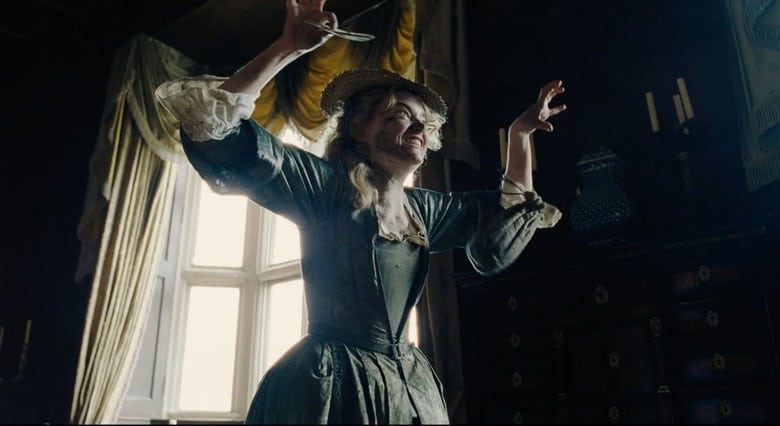Genre mashups, also known as genre hybrids, are a tricky business to get right. The balance between the genres will need to be spot on for it to be successful. A dramedy is no different and perhaps the most difficult of all genre hybrids to balance.
Taking a serious topic and injecting comedy into it is an art form. And if it’s not done carefully it can go really wrong. There are different ways to go about writing a script for a dramedy, but there are always key elements that are fundamental to keep in mind.
So what are the fundamental dramedy elements?
Table of Contents
What is a Dramedy?
A simple definition of a dramedy can be put as so:
A TV programme or film that has a mixture of comedy and drama.
Dramedies tend to deal with a serious subject and have comedic elements inputted, often coming from character and/or plot development.
This combination of drama and comedy will fluctuate in each film and TV show. Some will focus more heavily on drama with some comedic relief, whereas others will have more comedic elements and balance these out with drama.
It’s this combination of drama and comedy that entices the audience to seek more, as these juxtaposed emotions seem unconventional to put together, yet in reality play on the quintessence of life.
What Makes Dramedy Powerful?
The essence of dramedies is the human experience it mirrors. Life is made up of a complex array of emotions, often occurring all at once. The dramedy utilises this to bring a relatability to the screen.
By using dynamic and complex emotions that we experience daily, dramedies convey something highly personal and akin to our own life. This creates work that truly pulls on our heartstrings, delivering a powerful story that is more relatable than a straight-up comedy or drama.
Comedy and drama go hand in hand. Often the most serious of situations can elicit comedy. Or comedy can be found within a tangled web of otherwise serious emotions.
This is what makes dramedies work so well. As an audience, we are drawn in by the complexity of the drama. However, such seriousness is offset by the comedy, bringing a light touch to a topic that might otherwise seem overwhelming.
It’s the perfect balance in this sense. Think of it as like a recipe for a good meal, the bitterness but healthiness of one food complimented by the sweetness and comfort of another.
How Do You Write a Dramedy? The Essential Elements

There are multiple elements that make a dramedy a dramedy. Ensuring that the balance between drama and comedy is correct is fundamental in making sure your script meets the requirements of a dramedy.
Of course, the plot and characters will play a big part in establishing this balance. However, the addition of reality will really enhance the script.
The Balancing Act: Drama vs Comedy
The balance of drama and comedy is what initiates the success of your dramedy script. Deciding whether to focus more on drama, or on comedy, will be what helps establish the way you want to present your narrative. It is the blending of the two genres that will be the challenge.
Ensuring the script doesn’t get too serious and knowing where to inject comedy is a skill. Approaching the dramedy by leaning more towards the drama can be useful, though this will depend on the narrative at hand.
The comedy, meanwhile, often comes from the characters themselves. It can stem from their reaction to a serious, dramatic situation, for example. Or it could come from the situations the character continually finds themselves in.
Timing and pacing is everything when it comes to balancing the comedy with the drama. A well-placed joke at the end of a heavy scene can help alleviate the dramatic weight, for example. Whilst a moment of dramatic realism can make a story previously more focused on comedy suddenly hit home and resonate in a new way.
The Plot
Deciding how you are going to make the drama and comedy complement each other really rests on the plot you are developing.
- Your plot may incorporate one major problem or crisis as the basis of the series or film.
- Or there might be multiple problems, complications or crises.
With the addition of humour to the plot, if tensions get too high it can offer relief to the audience. This will then leave them desiring more. The use of humour in dramedies allows for taboo topics to be discussed, often bringing a progressive feel to the plot.
Moreover, the plot should always be what is driving the other elements of the script. Comedy or drama might come from specific scenes, set pieces or developments. But the fundamentals of the plot in its outline should be relatively untouched by genre. It’s in the execution and in the details where the story really leans into its comedy or its drama.
The Characters

Characters within a dramedy can really tie the genre together cohesively. Your characters’ reactions to crises, their differing personalities and how they will inject comedic relief are all aspects that you’ll need to consider.
There are varying characters that are used in dramedies, so ensuring the character tone and personality of your character is essential.
From the highly satirical Tony from After Life to the unexpectedly funny assassin Villanelle from Killing Eve, who deliberately injects humour. There are many approaches you can take to mould your character’s humour to fit the narrative.
The Reality
Dramedies really come alive when a layer of reality is shining through. The connection to human experience strikes the audience with emotive power. This carries dramedies.
They’re happy, sad, heart-warming, heart-wrenching and all the emotions in between. The complex fusion of emotions used in dramedies is where reality is captured. So, don’t be afraid to use juxtaposing emotions at the same time.
Often, when placed in dramatic situations or serious experiences we make light of a situation in a comedic fashion. This is a fundamental human experience that resonates.
Moreover, severity and complexity can naturally make audiences uncomfortable. This may be the point thematically and it may be important. However, comedy can act as a lubricant, making a difficult experience easier to swallow.
Dramedy Examples
We have covered how to incorporate the essential elements of a successful dramedy. But what does one look like finished? How do we define dramedy on screen?
Dramedies can be a broad church and the definition can sometimes feel blurry. So let’s look at some of the different types of dramedies and how they can be defined as such.
The Favourite
It’s 18th century England, Queen Anne has fallen sick and overseeing all the important matters of the country is Sarah Churchill. Balancing her newfound duties whilst tending to the frail Queen, Sarah still finds time to be charmed by the new servant Abigail, who sees a chance to return back to her aristocratic roots.
“The way they are each so flawed, so hilarious and so very complicated, I love that…It’s just reflective of real life.” – Emma Stone on the trio of characters
The Favourite is a great example of a genre-hybrid film that balances drama and comedy perfectly. This genre merge provides a serious tone in the narrative which is then interspersed with highly comic expressions and dialogue.
- The comedy primarily comes through the characters.
- Queen Anne, Sarah and Abigail all bring different humour to the screen, whether its eccentricity, a juxtaposing seriousness or wry commentary.
Furthermore, the humour can be found in the very juxtaposition of the traditional period setting and a more unconventional approach. We see things we don’t expect to see in this context and that often brings comedy, whether it’s eccentric and unconventional behaviour, detached attitudes or bizarre scenarios.
The plot is by no means light, particularly when as it does it deals with Queen Anne’s seventeen miscarriages. However, the film is a great example of how upending expectations can provide light relief to an otherwise serious, straight-laced context.
This comedy is not just there to provide light relief either. In its surreal quality, it has something thematically meaningful to say about the surreal, almost farcical quality of 18th century royalty.
The Upside
In The Upside, an unconventional relationship is formed when wealthy quadriplegic Phillip hires Dell, who is on parole, to care for him. The two men discover what life is really about, and how to live it to its fullest.
The Upside is the American remake of the French film, The Intouchables, which seamlessly collides drama and comedy together to portray a powerful narrative. This is an example of how dramedies can take deep emotions from serious topics whilst having light-hearted, and sometimes dark, humour.
Phillip and Dell are the two protagonists who we see develop a true friendship throughout the film, one perhaps not immediately apparent at first. The plot of a quadriplegic man needing care and hiring a man on parole sets the base serious tone for the story. But it is the nature of this friendship that provides a lot of the humour, as well as heart-wrenching moments.
Everyone has had an unexpected friendship that has blossomed into something rewarding. Of course, not everyone will have had such a friendship grow from the situation Phillip and Dell’s did. Nevertheless, The Upside provides relatable moments, so we can see a glimmer of something familiar.
In reaching for the extremes, The Upside finds its dramedy balance, putting together two characters who we might not expect together and finding humour and lightness in their bond.
After Life
After the unexpected death of his wife, and after contemplating taking his own life, Tony decides he would prefer to live long enough to punish the world. How? By saying and doing whatever he wants. According to Tony, this is his superpower.
Though his rude, brutal and inappropriate comments may get him in trouble, it’s his friends and relatives that Tony has to manoeuvre around most as they try to save the nice guy they used to know.
After Life merges drama and comedy in the most brutal way possible. It uses the traumatic topic of death and suicide as the reason to why the dark humour is present. The series combines Tony’s dry and dark humour with the tragedy he has just gone through when we first meet him.
This evolves into the way Tony deals with grief long term. The comedy stems from his coping mechanism.
The reality of After Life is brutally harsh. There is no one way to deal with grief, everyone goes through it differently. The series aims to illustrate how Tony figures out how to deal with grief and live his life.
And it’s in his unconventional approach that the comedy is found. After Life takes a dark theme and in filtering it through a specific character with a specific approach, finds its comedy.
The King of Staten Island
The King of Staten Island shows how characterisation and context can play a crucial role in bringing a comedic touch to a serious subject.
The story of a young man, Scott, trying to find direction in life and struggling to cope with the death of his father lays the ground for the story’s drama. Scott is a character that seems to struggle with the basics of getting through life and his family struggle to know how to deal with this much longer.
The comedy though, comes in Scott’s characterisation, someone who seems to get in troublesome situations but who always seems to not quite fit.
Whether it’s making awkward but truthful observations amidst a group of people, taking part in a robbery but getting distracted by his phone or practising his tattoo skills on a child – with Scott it always seems to be a case of right action, wrong time.
- It’s not necessarily what he does, it’s the context he does it in that provides the comedy.
- This lack of judgment about what to say and do and when is what creates the comedic juxtaposition.
- But it also leads to the drama, isolating Scott further and further.
- In turn, the comedy actually makes the drama more and more serious, Scott’s inability to get things right causing increasing friction with those in his life.
The King of Staten Island is a great example of the protagonist‘s dilemma being the source of the dramedy. The more he leans into himself, the more comedy and drama the film generates.
In Conclusion: The Power of a Dramedy
Though there may not be a blueprint to guarantee a successful dramedy there are certainly essential elements to consider.
- The plot: Make sure you know when to add those comic reliefs at an appropriate time and ensure to not let tensions get too high. The plot should mould the genre hybrid.
- The characters: Ensuring the characters work together to tie the drama-comedy cohesively is essential. Developing these characters to interact in serious situations realistically, as well as humorously, will bring more meaningful investment from the audience.
- The reality: Dramedies are relatable due to the fact they take on complex human experiences and topics. The reality that shines through will add the power that successful dramedies hold.
The beauty of a dramedy is that it can provide an in-depth view on a serious topic whilst providing the relief of comedy. This dynamic can disperse tension if it grows too high. Or it can add more complexity to a seemingly light-hearted situation.
A dramedy reflects life in glorious technicolor, the good and the bad mixed together, the surreal and the profound.
In Summary
A dramedy is a type of genre-hybrid, blending and balancing comedy with drama.
Depth of characterisation, the drive of the plot and the level of realism conveyed are the core elements to writing a dramedy. The often tricky balance of comedy and drama will find success in how it stems from the depth and believability of the characters, story world and plot.
A dramedy has the ability to touch on and illuminate an essential human experience. Serious situations and experiences alleviated by comedy make such situations easier to take in and more relatable and resonant for an audience. They might recognise their own experiences in the often surreal blend of serious drama and light relief.
–What did you think of this article? Share It, Like It, give it a rating, and let us know your thoughts in the comments box further down…
– Struggling with a script or book? Story analysis is what we do, all day, every day… check out our range of script coverage services for writers & filmmakers.
This article was written by Georgie Watts and edited by IS staff.
Get *ALL* our FREE Resources
Tackle the trickiest areas of screenwriting with our exclusive eBooks. Get all our FREE resources when you join 60,000 filmmakers on our mailing list!


I’ve written a dramedy (the book for a FringeNYC Festival musical) but was afraid of the stigma attached to calling it a dramedy. It seemed to trivialize it. No longer. Thank you for this eye-opening piece. One of my favorite lines comes near the end: “The reality that shines through will add the power that successful dramedies hold.”
So glad this article helped, Bob!